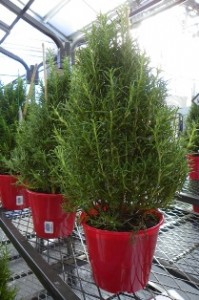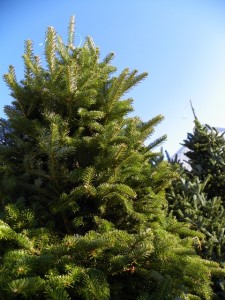Tips for Success With a Living Christmas Tree
go.ncsu.edu/readext?190326
en Español / em Português
El inglés es el idioma de control de esta página. En la medida en que haya algún conflicto entre la traducción al inglés y la traducción, el inglés prevalece.
Al hacer clic en el enlace de traducción se activa un servicio de traducción gratuito para convertir la página al español. Al igual que con cualquier traducción por Internet, la conversión no es sensible al contexto y puede que no traduzca el texto en su significado original. NC State Extension no garantiza la exactitud del texto traducido. Por favor, tenga en cuenta que algunas aplicaciones y/o servicios pueden no funcionar como se espera cuando se traducen.
Português
Inglês é o idioma de controle desta página. Na medida que haja algum conflito entre o texto original em Inglês e a tradução, o Inglês prevalece.
Ao clicar no link de tradução, um serviço gratuito de tradução será ativado para converter a página para o Português. Como em qualquer tradução pela internet, a conversão não é sensivel ao contexto e pode não ocorrer a tradução para o significado orginal. O serviço de Extensão da Carolina do Norte (NC State Extension) não garante a exatidão do texto traduzido. Por favor, observe que algumas funções ou serviços podem não funcionar como esperado após a tradução.
English
English is the controlling language of this page. To the extent there is any conflict between the English text and the translation, English controls.
Clicking on the translation link activates a free translation service to convert the page to Spanish. As with any Internet translation, the conversion is not context-sensitive and may not translate the text to its original meaning. NC State Extension does not guarantee the accuracy of the translated text. Please note that some applications and/or services may not function as expected when translated.
Collapse ▲In addition to pre-cut Fraser firs, many garden centers offer living trees grown in containers for sale as Christmas trees. If you are tempted to buy one of these to use both for holiday decoration and as a permanent addition to your landscape, keep the following tips in mind to ensure your tree has long and healthy life.
First Find the Right Place

Rosemary plants trained in the shape of a Christmas tree can be used indoors for the holidays and planted outside after Christmas.
When purchasing a living Christmas tree, first ask yourself the same question you should ask before buying any plant – where am I going to plant it? This question is most important because it will determine what type of tree you buy. All plants have certain conditions where they prefer to grow, and Christmas trees aren’t any different. Take note of the drainage and soil type where you plan to plant your tree. Be sure to look up to see what is above – most Christmas tree species eventually get big and should not be planted under power lines, other trees, or anything else that will limit their upward growth. Be sure to choose a sunny spot since most trees suitable for use as Christmas trees prefer to be in sun most of the day.
Next Find the Right Tree
After finding the right place, you need to choose the right plant. Unfortunately, the classic Christmas tree species, Fraser firs and spruces, only grow well in North Carolina in the mountains. Still, there are several evergreen trees suited to our coastal climate that can make attractive Christmas trees. For sites with good drainage and sandy soils, consider Chinese juniper. Varieties like ‘Hetzii Columnaris’, which grows 15’ to 20’ tall and 8’ wide, and ‘Spartan’, which reaches 20’ in height but only 3’-4’ in width, are readily available and fit nicely into smaller landscapes. For a moist site, consider Japanese cedar (Cryptomeria japonica). This large evergreen tree has wonderful texture and can reach 30’-40’ tall by 15’-20’ wide. ‘Black Dragon’ is a beautiful compact selection with dark green needles and architectural form that is often planted as a specimen.
Garden centers often offer specially trained rosemary plants during the holidays. These plants can be kept indoors through winter and planted outside in spring. Rosemary likes sandy soil and lots of sun and grows as a medium size shrub in our climate. If you want to go out on a limb this Christmas, consider using a holly (Ilex species), pre-decorated with red berries, or a Southern Magnolia (Magnolia grandiflora) as a Christmas tree. Both like good drainage and will tolerate more shade than conifers or rosemary.
Caring for Your Tree Indoors and Out
The less time your live tree stays inside, the better off it will be, with less than two weeks being ideal. Inside the home, place the tree in a cool, bright spot away from heating vents and out of direct sunlight. Keep it moist but not wet and never allow the container to sit in standing water. A good way to water these trees without having water run all over the floor is with crushed ice, which melts slowly and soaks into the soil.
After Christmas you will have to recondition your tree to the outside climate by placing it in a sheltered spot, such as an open garage, for a few days before planting. Container grown trees and shrubs can be planted outside in our area anytime throughout the year.
When planting your tree, be sure to plant it no deeper than the depth of the root ball, water-in and mulch well, but do not pile mulch around the trunk of the tree. Water the tree once a week through the first season after planting if rain does not do the job for you.
Learn More
If you prefer a live cut Christmas tree, you have two choices. Purchase one from a local tree farm or purchase a tree that has been shipped from the mountains. Directories of eastern NC fresh cut Christmas tree farms are available online at www.nc-chooseandcut.com and http://www.ncfarmfresh.com/farms.asp. More information about Christmas tree care and varieties, as well as the NC Christmas tree industry, is available online from the NC Christmas Tree Association.
Visit your local N.C. Cooperative Extension office to learn more about gardening and landscape care. Find your county Extension center.




